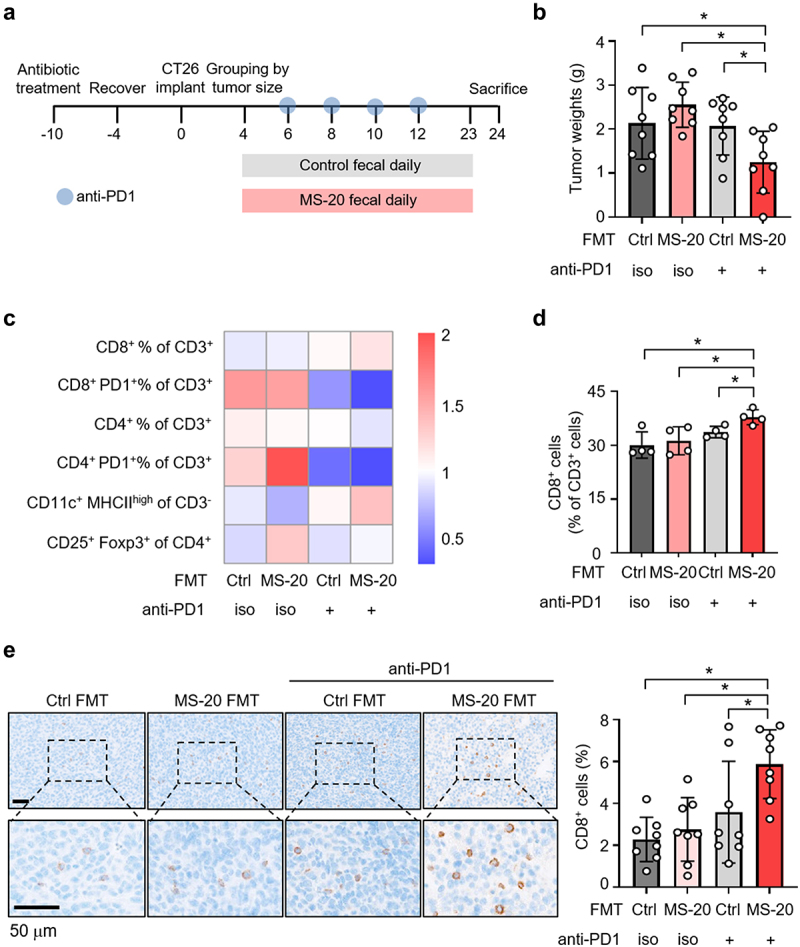Figure 2.

MS-20-treated feces enhanced the efficacy of the anti-PD1 antibody.
Note: Drinking water containing antibiotics (ampicillin, neomycin, metronidazole and vancomycin) was orally administered to the mice to remove the gut bacteria. After tumor growth, the mice were randomly assigned to receive FMT of vehicle control or MS-20. The anti-PD1 antibody was administered at the indicated time points (a). The tumor weights of the control FMT and MS-20 FMT groups treated with or without the anti-PD1 antibody were determined (n = 8/group) (b). The profile of tumor-infiltrating lymphocytes was determined using flow cytometry. The data are presented as the mean percentages of four mice and normalized by mean. (c). CD8+ T cells from the groups receiving the control FMT and MS-20 FMT with or without cotreatment with an anti-PD1 antibody were analyzed via flow cytometry (n = 4/group) (d). IHC staining was used to assess CD8+ T-cell signals from control FMT and MS-20 FMT mice treated with or without an anti-PD1 antibody. The number of cells in the whole tumor tissue was quantified using HALO software, and the percentage of CD8+ cells was calculated as the sum of CD8+ cells divided by the total number of nuclear cells (n = 8/group) (e). The data are presented as the mean±sd (b, d, e) or mean (c). The differences were assessed using Student’s t test (b, d, e). *p ≤ 0.05, **p ≤ 0.01 and ***p ≤ 0.001.
